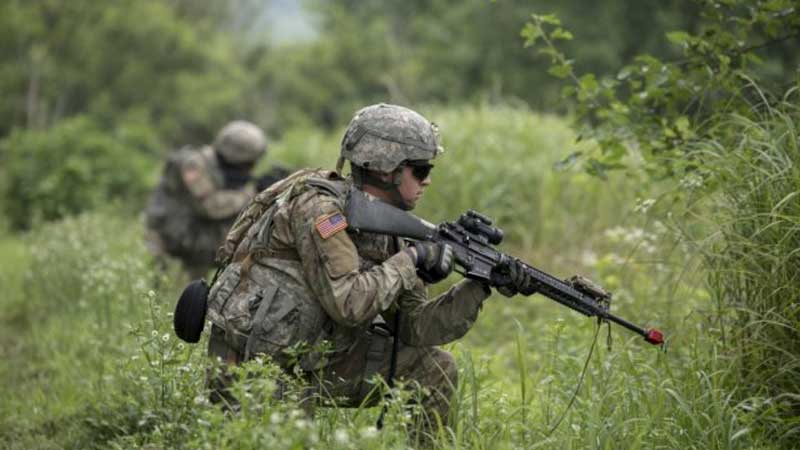World's top war photojournalists together for first time at Shooting War: Covering 50 Years of Confl
Thursday, 06 June 2019 12:00.PM
- Astronaut and photographer Chris Hadfield joins as panel moderator.
Eleven of the world's top conflict photographers will be in Toronto on June 22 to discuss what motivates them to bear witness to some of the world's worst inhumanities, and the emotional impact such experiences have caused.
The event, hosted by The Globe and Mail, will be at the TIFF Bell Lightbox (350 King Street West) and runs from 9 am to 6:30 pm. It follows from the work of renowned neuropsychiatrist Dr. Anthony Feinstein (professor at the University of Toronto and associate scientist at Sunnybrook Health Sciences Centre) who has researched stress and emotional health in front-line journalists.
"Photojournalists are visual historians; their work is keeping civil society informed of events that have the capacity to affect all of us. It is hazardous work, in the extreme," says Dr. Feinstein, whose 2018 book Shooting War explores the emotional toll the job can take on photojournalists. "Of all the different types of journalists, none get closer to conflict than the photographers, leaving them potentially vulnerable to physical, psychological and moral injury."
The event is unique for the time span of the work covered—from Vietnam to modern conflicts in Afghanistan and Syria—and the range of experiences offered by bringing together these 11 photographers for the first time to discuss their motivation and how they are affected by their decades photographing war, conflict and revolution.
"A single image can have an extraordinary influence on people's perception and policy," says David Walmsley, Editor-in-Chief, The Globe and Mail. "You may not know the names of these photographers, but you know their work. These men and women risk their safety on the front lines to bring those stories to light, and their experiences are worth telling."
The panels include civil war in the Balkans and Africa, moral decision-making in combat zones, women in conflict photography, and the power of a single image (moderated by astronaut Chris Hadfield).
The photographers are:
- Corinne Dufka, West Africa Director at Human Rights Watch and former photojournalist for the Reuters News Agency who covered conflicts in Latin America and Africa.
- Laurence Geai, currently investigating the integration of migrants into European society and who has covered conflict in Africa and the Middle East.
- David Guttenfelder, a National Geographic photographer who focuses on geopolitical conflict, conservation, and culture and has covered events in nearly 100 countries. One of his North Korea photographs was voted one of Time Magazine's 100 Most Influential Photographs Ever Taken.
- Carol Guzy, the only photojournalist to have received four Pulitzer Prizes, who specializes in long-term, documentary human interest projects and feature stories.
- Ron Haviv, who focuses on conflict and the humanitarian consequences stemming from it. His work in the Balkans was used as evidence to indict and convict war criminals at the international tribunal in The Hague.
- Santiago Lyon, who has covered conflicts in more than a dozen countries from the civil war in El Salvador to the Taliban takeover in Afghanistan.
- Tim Page, an iconic photographer of the Vietnam War and founder of the IndoChina Media Memorial Foundation to commemorate the work of the dead and the missing.
- Charles Porter IV, who won a Pulitzer Prize for Spot News Photography in 1996 for an image that captured the horror of the Oklahoma City bombing.
- Joao Silva, a conflict photographer based in Johannesburg, South Africa. Silva was severely wounded after stepping on a landmine while on assignment for The New York Times in Afghanistan.
- Goran Tomasevic, Chief Photographer for Reuters.
- David Seymour, founder of the Magnum cooperative, who covered many important political events from the Spanish Civil War through World War II before he was killed at Suez in 1956. David Szymin changed his name to Seymour in 1942 and used 'Chim' professionally. He will be represented by his biographer Carole Naggar, a writer, curator, educator and photography historian.
The event ends with a tribute to Yannis Behrakis, who was a photojournalist, Pulitzer Prize winner, senior editor with Reuters and ambassador for Reuters Pictures before his death earlier this year. The tribute will be led by Sir Harold Evans, Reuters editor-at-large, and Goran Tomasevic.
Tickets for Shooting War are available from the TIFF Box Office (https://oss.ticketmaster....) and more information on the event is online: https://www.globeandmaile...&.
SOURCE: The Globe and Mail
